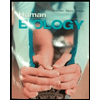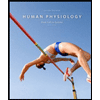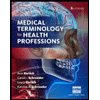the herbal supplements bitter orange, also known as synephrine, mimics the effects of neurotransmitters on the SNS on the heart and blood vessels serving the abdominal viscera and skin. what effect do you think this would have on the blood pressure? Considering this, do you think this drug should be given to people with hypertension (high blood pressure)?
the herbal supplements bitter orange, also known as synephrine, mimics the effects of neurotransmitters on the SNS on the heart and blood vessels serving the abdominal viscera and skin. what effect do you think this would have on the blood pressure? Considering this, do you think this drug should be given to people with hypertension (high blood pressure)?
Human Biology (MindTap Course List)
11th Edition
ISBN:9781305112100
Author:Cecie Starr, Beverly McMillan
Publisher:Cecie Starr, Beverly McMillan
Chapter7: Circulation: The Heart And Blood Vessels
Section: Chapter Questions
Problem 1CT: A patient suffering from hypertension may receive drugs that decrease the hearts output, dilate...
Related questions
Question
the herbal supplements bitter orange, also known as synephrine, mimics the effects of neurotransmitters on the SNS on the heart and blood vessels serving the abdominal viscera and skin. what effect do you think this would have on the blood pressure? Considering this, do you think this drug should be given to people with hypertension (high blood pressure)?
Expert Solution
This question has been solved!
Explore an expertly crafted, step-by-step solution for a thorough understanding of key concepts.
This is a popular solution!
Trending now
This is a popular solution!
Step by step
Solved in 2 steps

Knowledge Booster
Learn more about
Need a deep-dive on the concept behind this application? Look no further. Learn more about this topic, biology and related others by exploring similar questions and additional content below.Recommended textbooks for you

Human Biology (MindTap Course List)
Biology
ISBN:
9781305112100
Author:
Cecie Starr, Beverly McMillan
Publisher:
Cengage Learning

Human Physiology: From Cells to Systems (MindTap …
Biology
ISBN:
9781285866932
Author:
Lauralee Sherwood
Publisher:
Cengage Learning

Essentials of Pharmacology for Health Professions
Nursing
ISBN:
9781305441620
Author:
WOODROW
Publisher:
Cengage

Human Biology (MindTap Course List)
Biology
ISBN:
9781305112100
Author:
Cecie Starr, Beverly McMillan
Publisher:
Cengage Learning

Human Physiology: From Cells to Systems (MindTap …
Biology
ISBN:
9781285866932
Author:
Lauralee Sherwood
Publisher:
Cengage Learning

Essentials of Pharmacology for Health Professions
Nursing
ISBN:
9781305441620
Author:
WOODROW
Publisher:
Cengage


Medical Terminology for Health Professions, Spira…
Health & Nutrition
ISBN:
9781305634350
Author:
Ann Ehrlich, Carol L. Schroeder, Laura Ehrlich, Katrina A. Schroeder
Publisher:
Cengage Learning

Basic Clinical Lab Competencies for Respiratory C…
Nursing
ISBN:
9781285244662
Author:
White
Publisher:
Cengage